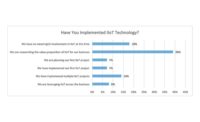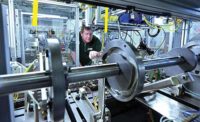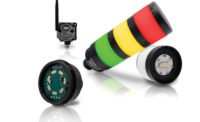As manufacturers cope with a labor shortage and skills gap, they have begun to ask for more services from automation suppliers, including remote support, monitoring and maintenance programs. What was once a system enhancement for a manufacturer’s internal use, industrial internet of things (IIOT) technology is now becoming a requirement for machine builders to provide service and support for their customers.
Brian P. Romano, director of technology development at The Arthur G. Russell Co. Inc. (AGR), has seen this evolution firsthand. When he joined the Bristol, CT, machine builder a decade ago, he was tasked with finding ways to get more data out of an automated assembly system.
“We put sensors in our machines. We put in PLCs to suck up the data. And, we installed software to do all the analytics,” he recalls. “That resulted in some fancy graphics and great analysis. We could look at a host of key performance indicators, including machine speed, bottlenecks, operator response time, and Pareto charts on downtime and scrap.
“It was great—except that our customers weren’t ready for it. They didn’t know what to do with it. Today, our customers are engaging us differently. We are being asked to provide more maintenance and support of the machine.
“In the past, we would build the machine, deliver it and train the staff. The customer would take ownership, and that would be it. Today, our customers want us to be more involved. They want us to monitor their equipment remotely in real time.”
One reason for the shift is that manufacturers simply don’t have the qualified staff—and the Great Resignation in the wake of the COVID-19 pandemic has only made the problem worse. For example, the U.S. Bureau of Labor Statistics predicts that job openings for controls engineers will increase by 6 percent in 2023. That equates to 146,000 new jobs.
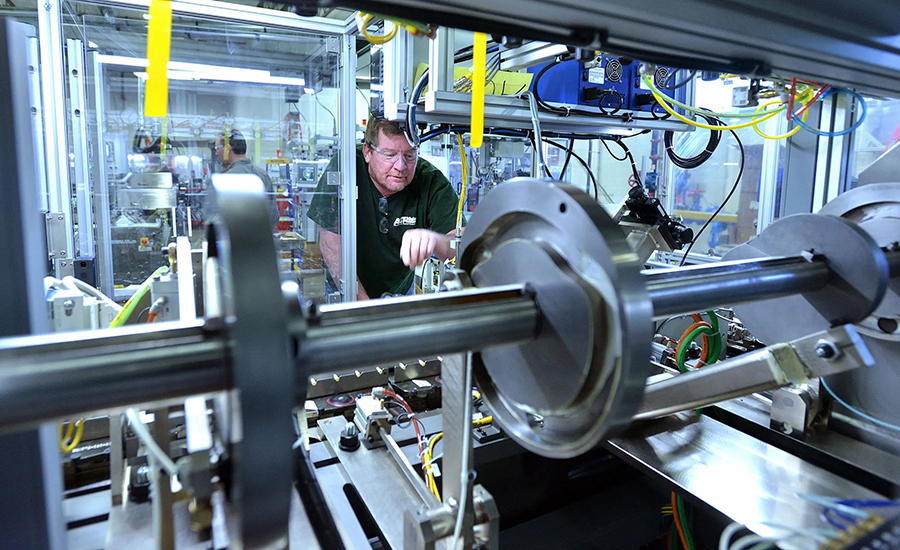
Manufacturers are increasingly asking automation suppliers to provide remote support, monitoring and maintenance programs. Photo courtesy The Arthur G. Russell Co. Inc.
Getting Started
For Industry 4.0 to be applied successfully in automated assembly systems, machine builders must first determine if their customers are culturally and technologically ready for it. Fortunately, a number of assessment tools are available, such as the Smart Industry Readiness Index (SIRI), the Reference Architecture Model for Industry 4.0 (RAMI 4.0), the Acatech Industry 4.0 Maturity Index, and the Ohio Digital Transformation Maturity Assessment.
For example, SIRI was created by the Singapore Economic Development Board in partnership with technology companies, consulting firms, and industry and academic experts. It comprises a suite of frameworks and tools to help manufacturers—regardless of size and industry—start, scale and sustain digital transformation.
The SIRI framework comprises three layers. The topmost layer identifies three fundamental building blocks of Industry 4.0: technology, process and organization. Underpinning those building blocks are eight pillars, which represent critical aspects that companies must focus on to become future-ready organizations. The third and final layer comprises 16 dimensions that companies should reference when evaluating the current maturity levels of their facilities.
“SIRI is very comprehensive,” says Romano, who is also an adjunct professor of engineering at the University of Hartford in Connecticut. “It looks at how many workers you have and what technologies you have. Do you have management buy-in? Do you have financial backing?”
Such assessments are an important first step, since integrators should not foist technology on manufacturers that cannot take full advantage of it.
“The digital transformation journey is unique to every company,” Romano points out. “Technology always seems to be the first and easiest go-to solution. There are lots of new gadgets out there. But, it might be putting the cart before the horse if manufacturers are not ready for it.”
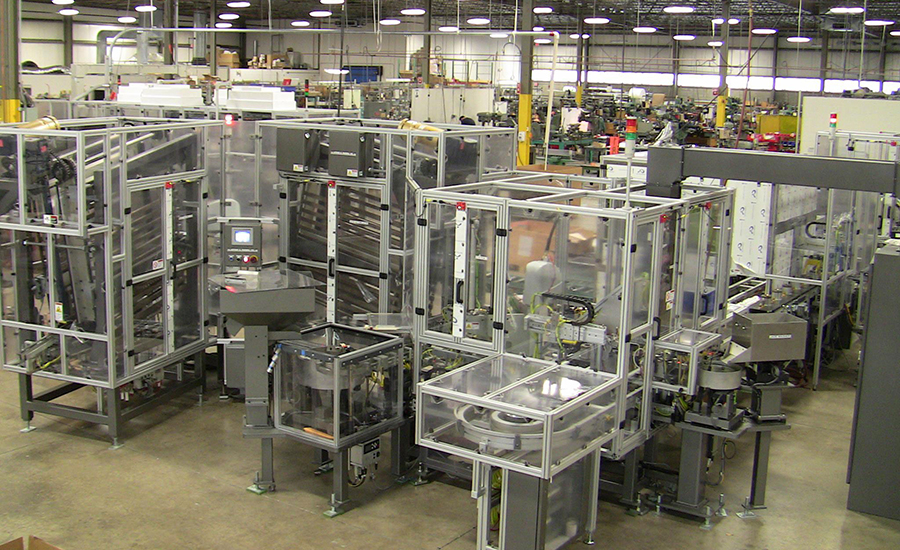
There are four steps to deploying IIOT: exposing the data, collecting the data, analyzing the data, and applying what you’ve learned from the data. Photo courtesy The Arthur G. Russell Co. Inc.
Four Steps to IIOT
There are four steps to deploying IIOT: exposing the data, collecting the data, analyzing the data, and applying what you’ve learned from the data.
Manufacturers can collect data from their assembly processes as well as from the machinery itself. Manufacturers have long been processing the former, collecting images from vision systems, force data from presses, and torque data from fastening tools. Only recently have they begun looking at their health of their machines. IIOT sensors are available to measure variables, such as operating temperature, vibration, air consumption and power consumption, that can give an indication of how well various machine components are working.
New networking standards, such as IO-Link, enable engineers to collect operating information from machine components quickly and easily. For example, photoelectric sensors are ubiquitous in automated assembly systems. If the sensor is equipped with IO-Link and some built-in intelligence, engineers can monitor the strength of the signal from the sensor. If the signal strength dips below a threshold, an alert can be sent to a technician to, say, clean the lens.
Such advancements are not limited to new assembly machines. Legacy equipment can be retrofit. New technologies, such as the Snap Signal family of products from Banner Engineering, make it possible for engineers to collect data on old and new equipment alike. Snap Signal is an easily deployable portfolio of modular IIOT hardware and software that delivers actionable machine data from across a factory. Snap Signal is an overlay network that can capture data signals from virtually any source. It seamlessly converts these sources to a single industry-standard protocol, then distributes the data for quick and easy consumption. Engineers can monitor key equipment within one area or monitor an entire facility.
For the next step, collecting the data, two standards apply: ISA-88, which governs plant floor control systems, and ISA-95, which covers networking with manufacturing execution systems and enterprise resource planning software.
“Data from the shop floor is very granular,” says Romano. “As you summarize the data and report on it, you bring it into a more summarized state that can be used by an ERP system.”
Engineers have myriad options for analyzing the data once it’s been collected. Some supervisory control and data acquisition packages have some level of data analytics built in. Others, such as Microsoft Power BI, are offline.
“You can do rudimentary analysis in Excel. You can bring data in. You can graph it. You can do polynomial regression on the graph, which allows you to do forecasting and modeling. It’s not very good, but it’s OK,” says Romano.
A better option, says Romano, are the new generation of online analytics tools, such as Sorba.ai, Aveva and ThingWorx.
The last step—applying what you’ve learned from the data—is what differentiates Industry 3.0 from Industry 4.0, says Romano. Artificial intelligence software can be used to analyze bottlenecks, detect anomalies, and administer predictive or prescriptive maintenance.
“If you have all this historical data from a machine and you can tie that to when things fail and when they are running well, you can put that into an AI engine to predict the remaining useful life of the machine,” says Romano. “How cool is that?”
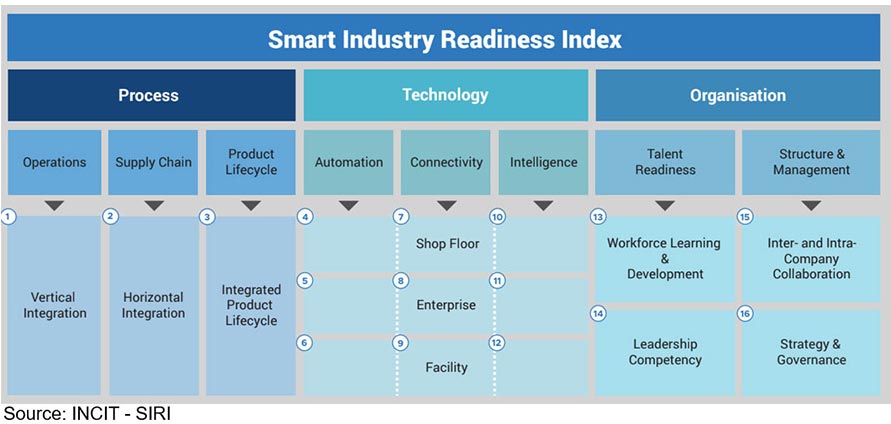
The Smart Industry Readiness Index comprises a suite of frameworks and tools to help manufacturers start, scale and sustain digital transformation. Source: The Arthur G. Russell Co. Inc.
Silver, Gold and Platinum
When a manufacturer wants to take advantage of AGR’s remote support program, AGR will first assess the company’s IIOT readiness. Based on the results, AGR will provide a base hardware platform to interface with the manufacturer’s machine control hardware to allow AGR to collect data. The base system consists of an industrial PC with a database interface, remote support hardware, network interface hardware, and IIOT sensors.
With that in place, manufacturers can opt for three levels of support: silver, gold and platinum.
The following are included with the silver level:
- PLC to database interface software that provides locally hosted reporting screens for live and historical information.
- Four base standard screens for OEE and downtime data.
- Two web-enabled screens available via smartphone or tablet.
- A cellular-enabled device for AR-based remote support, such as smart glasses.
- A 40-hour block of remote support.
- Response time from initial call within one business day.
The gold level includes everything in the silver package, plus the following:
- A cloud-based data repository with web reporting and cloud computing analytics.
- Weekly AGR remote monitoring services.
- An additional 80-hour block of remote support.
- One preventive maintenance site visit, with a maximum of 40 hours on site.
- Response time from initial call within eight hours.
The platinum level includes everything in the silver and gold packages, plus the following:
- AI hardware and software subscription.
- Additional weekly AGR remote monitoring services.
- Additional 80-hour block of remote support.
- Two preventive maintenance site visits, with a maximum of 40 hours on site per visit.
- Response time from initial call within four hours.
To taking advantage of AGR’s remote support, manufacturers will need some type of meeting software. Several programs are available, including FaceTime, Microsoft Teams and Teamviewer Assist.
Manufacturers will also need some way to store all the data they collect. That can be done on site or in the cloud via services such as AWS or Google.
“You need to know the difference between relational and time series data, because that’s going to be pertinent to how you store the data,” Romano adds.
Augmented reality using a cellular-enabled device, such as smart glasses, is an important tool for remote support. AGR uses Moverio smart glasses from Epson, but other brands work equally well, including Vuzix and Microsoft HoloLens.
Wearing smart glasses, a technician at an assembly plant can transmit exactly what he’s seeing to a technician at AGR. At the same time, the AGR engineer can send images, videos or text instructions back to the technician.

Wearing smart glasses, a technician at an assembly plant can transmit exactly what he’s seeing to a technician at an automation supplier. Photo courtesy Epson
“I can circle a specific part on a machine and say, ‘check this.’ That circle will stay in place even if the technician turns his head to look at something else,” says Romano. “A cool thing about smart glasses is that both hands are free. With a smart phone or tablet, you have to set it down to do your work.”
Romano admits that manufacturers may not be keen on letting outside personnel access their network—even if they’re from a trusted business partner. “Some manufacturers don’t let vendors talk to their factory floor,” he concedes. “Recently, I met with a customer who had one of our machines connected to a companywide network. The manufacturer declined our offer of remote access and AR support because it didn’t want to risk someone from AGR breaching its network.”
After some discussion, AGR came up with an alternative idea. When remote support was needed, the manufacturer would unplug the machine from its network, and AGR personnel would be allowed to access the machine via the company’s guest WiFi system.
ASSEMBLY Online
For more information on Industry 4.0, read these articles:
Industry 4.0 Drives Conveyor Technology
Industry 4.0: Myths vs. Reality
50-Year-Old Machine Has Bright Future in Light Stick Assembly


